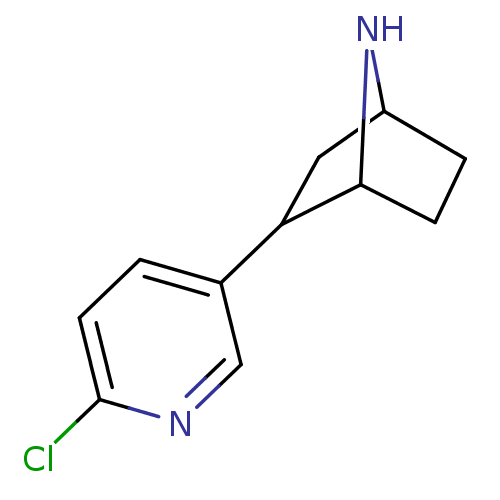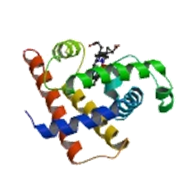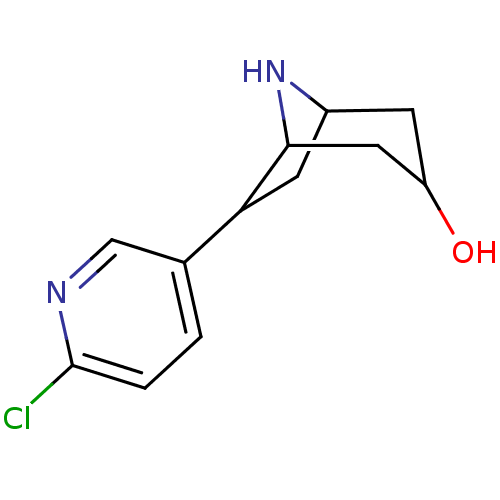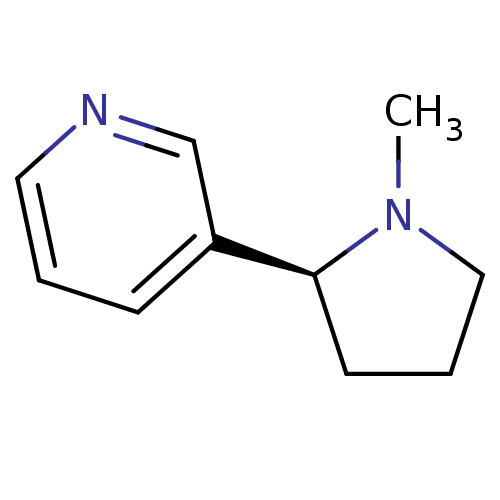TargetNeuronal acetylcholine receptor; alpha2/beta4(Homo sapiens (Human))
University Of Wollongong
Curated by ChEMBL
University Of Wollongong
Curated by ChEMBL
Affinity DataKi: 0.0910nMAssay Description:Agonistic potency against nicotinic acetylcholine receptor alpha3-beta4More data for this Ligand-Target Pair
TargetNeuronal acetylcholine receptor; alpha2/beta4(Homo sapiens (Human))
University Of Wollongong
Curated by ChEMBL
University Of Wollongong
Curated by ChEMBL
Affinity DataKi: 31nMAssay Description:In vitro ability to displace [3H]-(-)-cytisine binding to whole rat brain membranes at Nicotinic acetylcholine receptor alpha4-beta2More data for this Ligand-Target Pair
TargetNeuronal acetylcholine receptor; alpha2/beta4(Homo sapiens (Human))
University Of Wollongong
Curated by ChEMBL
University Of Wollongong
Curated by ChEMBL
Affinity DataKi: 70nMAssay Description:Displacement of [3H]epibatidine from alpha2beta4 nAChR after 4 hrs by liquid scintillation counting analysisMore data for this Ligand-Target Pair
TargetNeuronal acetylcholine receptor; alpha2/beta4(Homo sapiens (Human))
University Of Wollongong
Curated by ChEMBL
University Of Wollongong
Curated by ChEMBL
Affinity DataKi: 103nMAssay Description:Binding affinity against nicotinic acetylcholine receptor alpha2-beta4 using [3H]epibatidine as radioligand expressed in HEK293 cells or tsA cellsMore data for this Ligand-Target Pair
TargetNeuronal acetylcholine receptor; alpha2/beta4(Homo sapiens (Human))
University Of Wollongong
Curated by ChEMBL
University Of Wollongong
Curated by ChEMBL
Affinity DataKi: 1.82E+3nMAssay Description:Displacement of [3H]epibatidine from alpha2beta4 nAChR after 4 hrs by liquid scintillation counting analysisMore data for this Ligand-Target Pair


 3D Structure (crystal)
3D Structure (crystal)

